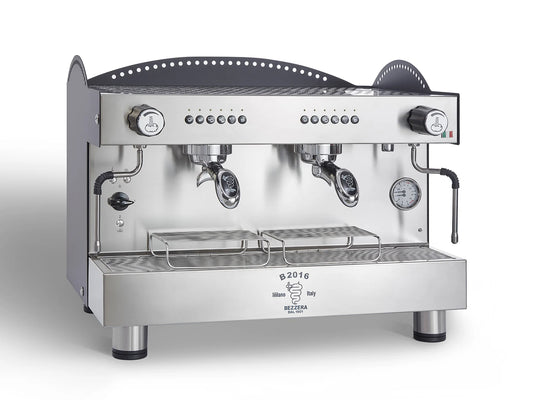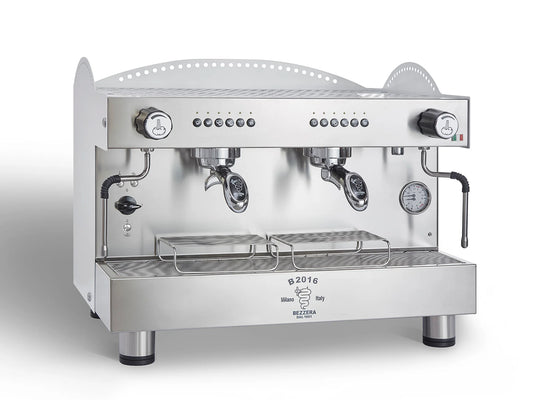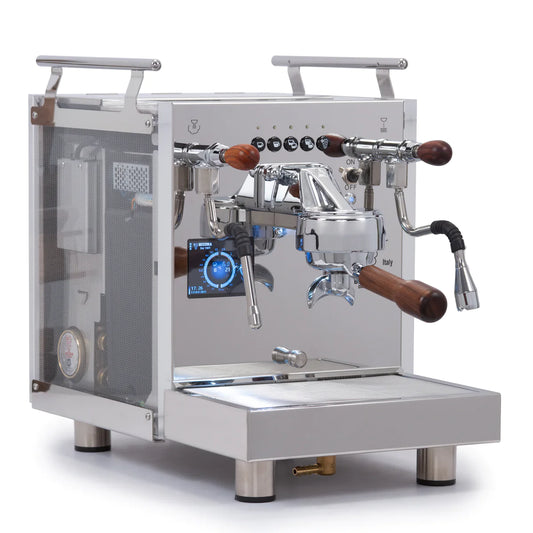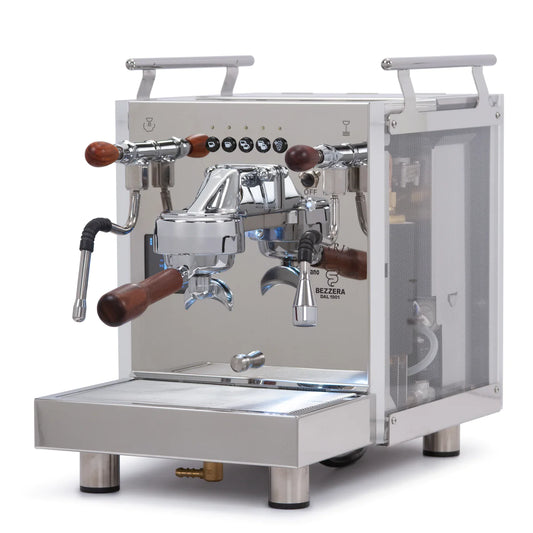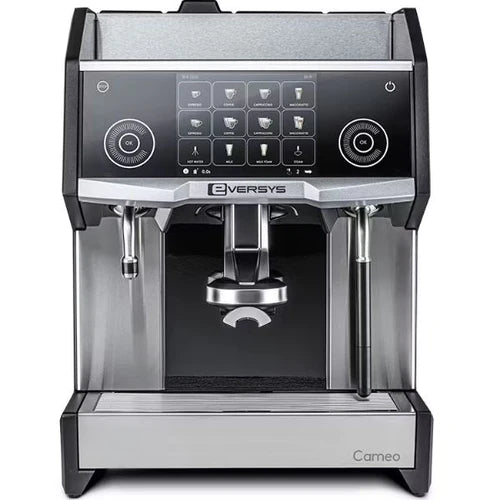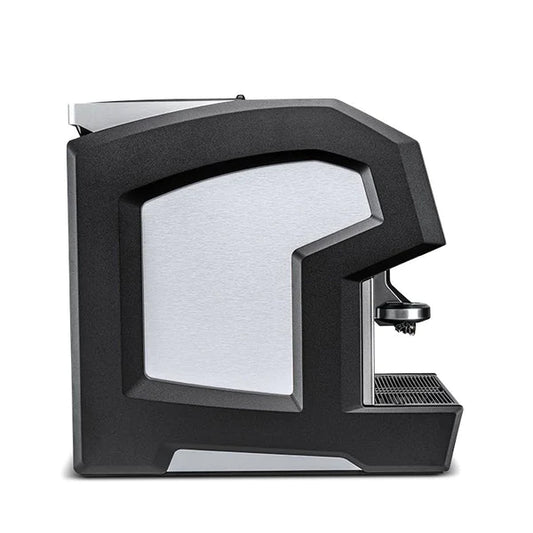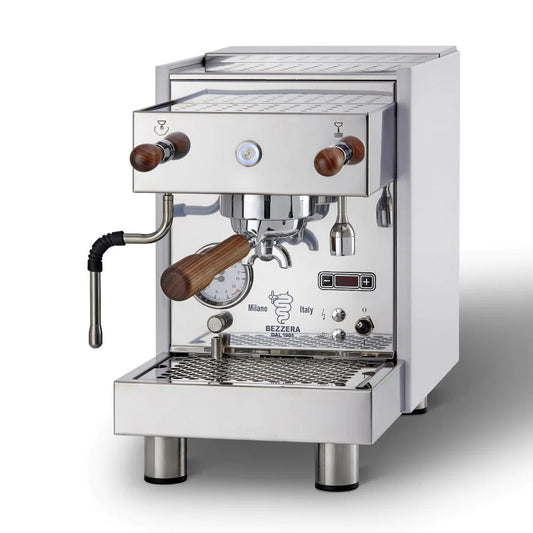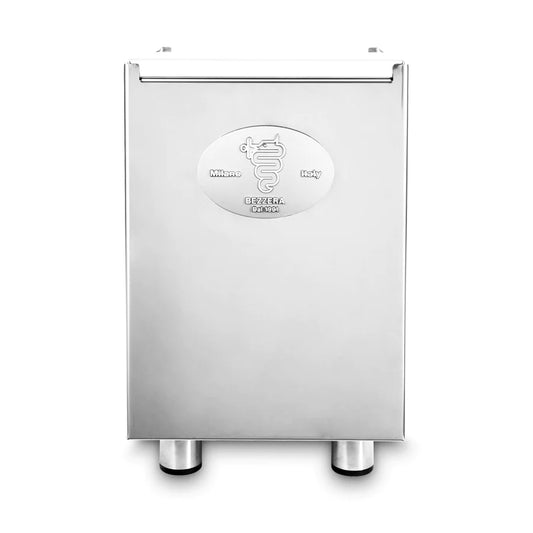How a Breville Espresso Machine Works: Unlocking the Secrets of Exceptional Coffee
Table of Contents
- Introduction
- The Basics of Espresso Extraction
- Understanding Breville Espresso Machines
- How to Use Your Breville Espresso Machine
- Troubleshooting Common Issues
- Conclusion
- FAQ
Introduction
Picture this: the aroma of freshly ground coffee beans wafting through the air, the sound of water sizzling as it meets the grounds, and the anticipation of that first rich, creamy sip. If you're a coffee enthusiast or a café owner, you know that creating the perfect espresso is both an art and a science. But how does a Breville espresso machine work to deliver that café-quality experience right in your own kitchen?
At Coffee Machine Supply, we believe that understanding the inner workings of your espresso machine is key to mastering your brewing skills. Breville's lineup of espresso machines combines innovative technology with user-friendly design, making them an essential tool for anyone serious about coffee. In this blog post, we will delve into the mechanics of Breville espresso machines, exploring their features, functionality, and how each component plays a role in crafting the perfect cup.
By the end of this guide, you will not only grasp how a Breville espresso machine works but also gain insights into optimizing your espresso-making process. We'll cover everything from the basics of espresso extraction to the nuances of adjusting grind settings and milk frothing techniques. Together, let's unlock the full potential of your Breville espresso machine and elevate your coffee experience.
The Basics of Espresso Extraction
Before we dive into the specifics of how a Breville espresso machine operates, it's essential to understand the fundamentals of espresso extraction. Espresso is a concentrated coffee brewed by forcing hot water through finely-ground coffee beans under pressure. This process results in a bold flavor profile and a rich crema that characterizes a well-prepared shot of espresso.
The Espresso Process
- Grinding: The first step in preparing espresso is grinding the coffee beans. The grind size is crucial; it needs to be fine enough to allow for proper extraction but not so fine that it clogs the portafilter. Breville machines often come equipped with built-in grinders, allowing users to grind fresh beans on demand.
- Dosing: Next, the ground coffee is dosed into the portafilter. The amount of coffee used can significantly influence the taste and strength of the espresso. A typical single shot requires approximately 7-9 grams of coffee, while a double shot needs about 14-18 grams.
- Tamping: After dosing, the coffee grounds must be tamped down evenly in the portafilter to create a uniform surface. Proper tamping ensures that water flows evenly through the grounds, preventing channeling and uneven extraction.
- Brewing: Once tamped, the portafilter is locked into the machine's group head. Water heated to the optimal brewing temperature (around 190-200°F) is then forced through the coffee under pressure, typically around 9 bars. This extraction process lasts about 25-30 seconds, producing a rich shot of espresso.
- Frothing: For those who enjoy lattes or cappuccinos, frothing milk is the final step. Breville machines are equipped with steam wands that create microfoam when steamed correctly, allowing for a creamy texture that complements the espresso.
Summary of Key Points
- Espresso is made by forcing hot water through finely-ground coffee under pressure, resulting in a concentrated coffee shot with rich crema.
- The grinding, dosing, tamping, brewing, and frothing processes all contribute to the final espresso's flavor and texture.
Understanding Breville Espresso Machines
Breville espresso machines are designed to simplify the espresso-making process while providing high-quality results. Here's a closer look at the features that make them stand out in the world of coffee equipment.
Key Features of Breville Espresso Machines
- Built-in Grinder: Many Breville models feature an integrated burr grinder, allowing for freshly ground coffee beans for each brew. This ensures maximum flavor and aroma, as coffee begins to oxidize soon after grinding.
- Digital Temperature Control: Consistent temperature is crucial for espresso extraction. Breville machines often include digital temperature control systems that monitor the water temperature, ensuring it remains stable throughout the brewing process.
- Pressure Gauge: Some models are equipped with a pressure gauge, allowing users to monitor the pressure during extraction. This feature helps in dialing in the perfect shot by adjusting grind size and tamping pressure.
- Customizable Settings: Breville machines offer customizable settings for grind size, shot volume, and brewing time. This flexibility allows users to experiment and find the ideal parameters for their preferred coffee beans.
- Steam Wand: The steam wand is a signature feature of Breville machines, enabling users to froth milk to perfection. With practice, you can create silky microfoam for lattes and cappuccinos.
Popular Breville Models
At Coffee Machine Supply, we carry a range of Breville espresso machines, ensuring there's an option for every coffee lover:
- Breville Barista Express: This model combines a built-in grinder with ease of use, making it ideal for beginners and experienced baristas alike.
- Breville Infuser: Known for its precise temperature control, the Infuser is perfect for those looking to fine-tune their espresso-making skills.
- Breville Bambino Plus: A compact option that packs a punch, the Bambino Plus offers high performance in a smaller footprint.
Summary of Key Points
- Breville espresso machines feature built-in grinders, digital temperature control, pressure gauges, customizable settings, and steam wands for frothing.
- Popular models include the Barista Express, Infuser, and Bambino Plus, each catering to different needs and skill levels.
How to Use Your Breville Espresso Machine
Now that we've covered the features of Breville machines, let's go through the step-by-step process of using one effectively.
Step 1: Setup and Preparation
Before brewing, ensure your machine is properly set up:
- Fill the Water Tank: Always fill the water tank with fresh, cold water to the maximum fill line. This ensures optimal brewing conditions.
- Preheat the Machine: Turn on the machine and let it preheat for about 10-15 minutes. This allows the components to reach the ideal brewing temperature.
- Select the Right Beans: Choose high-quality coffee beans suited for espresso. Medium to dark roasts are typically preferred for their bold flavors.
Step 2: Grinding Coffee
- Adjust Grind Size: Set the grinder to a fine setting. You may need to experiment with different grind sizes to find what works best for your beans.
- Measure and Grind: Measure the desired amount of coffee (7-9 grams for a single shot) and grind it fresh.
Step 3: Dosing and Tamping
- Dosing: Transfer the ground coffee to the portafilter's basket, making sure it's evenly distributed.
- Tamping: Use a tamper to compress the coffee evenly and firmly. Aim for a level surface to ensure uniform extraction.
Step 4: Brewing Espresso
- Lock in the Portafilter: Secure the portafilter into the group head of the machine.
- Start the Extraction: Begin the brewing process. Monitor the extraction time, aiming for 25-30 seconds for optimal results.
- Observe the Crema: A well-extracted espresso will have a thick layer of crema on top, indicating a successful brew.
Step 5: Frothing Milk
- Prepare the Milk: Pour cold milk into a frothing pitcher.
- Purge the Steam Wand: Before frothing, purge the steam wand to remove any residual water.
- Froth the Milk: Insert the steam wand into the milk and turn on the steam. Angle the pitcher to create a whirlpool effect, incorporating air into the milk until you reach your desired texture.
- Combine: Pour the frothed milk over your espresso to create your favorite drink.
Summary of Key Points
- Ensure proper setup by filling the water tank and preheating the machine.
- Grind fresh coffee beans to the right size, dose and tamp evenly, and extract espresso within the optimal time frame.
- Froth milk using the steam wand for delicious lattes and cappuccinos.
Troubleshooting Common Issues
Even the best machines can encounter issues. Here are common problems and how to resolve them.
Problem 1: Inconsistent Extraction
Symptoms: Shots vary in taste and appearance.
Solutions:
- Adjust Grind Size: If shots are pulling too quickly, try a finer grind. If they’re too slow, go coarser.
- Tamping Pressure: Ensure even and consistent tamping. Uneven pressure can lead to channeling.
Problem 2: Lack of Crema
Symptoms: The espresso shot appears thin with minimal crema.
Solutions:
- Fresh Beans: Use fresh, high-quality beans, as old coffee may not produce good crema.
- Grind Size and Dose: Ensure you’re using the right grind size and dose for optimal extraction.
Problem 3: Steamed Milk Issues
Symptoms: Milk is either too foamy or not frothed enough.
Solutions:
- Steam Wand Technique: Adjust the position of the steam wand to create a whirlpool effect for better frothing.
- Milk Temperature: Use cold milk and froth until it reaches a temperature of about 150-160°F.
Summary of Key Points
- Common issues include inconsistent extraction, lack of crema, and problems with steamed milk.
- Solutions involve adjusting grind size, ensuring fresh beans, and refining steaming techniques.
Conclusion
Understanding how a Breville espresso machine works empowers you to take control of your coffee-making experience. From the intricacies of espresso extraction to the nuances of frothing milk, each step plays a vital role in crafting the perfect cup. By following the guidelines outlined in this post, you can optimize your brewing process and enjoy café-quality beverages in the comfort of your home.
At Coffee Machine Supply, we are passionate about providing the best equipment to enhance your coffee journey. Explore our curated collections of espresso machines, coffee grinders, and more to find the perfect tools for your needs. With the right equipment and knowledge, we can elevate your coffee experience, one quality machine at a time.
FAQ
Q: How often should I clean my Breville espresso machine?
A: It's recommended to clean your machine after every use and perform a deeper cleaning every few weeks, depending on usage. Follow the manufacturer's instructions for descaling.
Q: Can I use pre-ground coffee with a Breville machine?
A: While you can use pre-ground coffee, freshly ground beans will yield better flavor and aroma. We recommend using the built-in grinder for optimal results.
Q: What type of coffee is best for espresso?
A: Medium to dark roast coffee beans are typically best for espresso, as they provide a rich flavor and good crema.
Q: How do I know if my espresso is correctly extracted?
A: A well-extracted shot of espresso will have a rich, thick crema and should take about 25-30 seconds to brew.
Q: What should I do if my machine is not producing steam?
A: Check the water level in the tank and ensure the steam wand is not clogged. If issues persist, refer to the user manual or contact customer support.
With this knowledge, you're all set to master your Breville espresso machine and enjoy the delightful world of espresso brewing!

